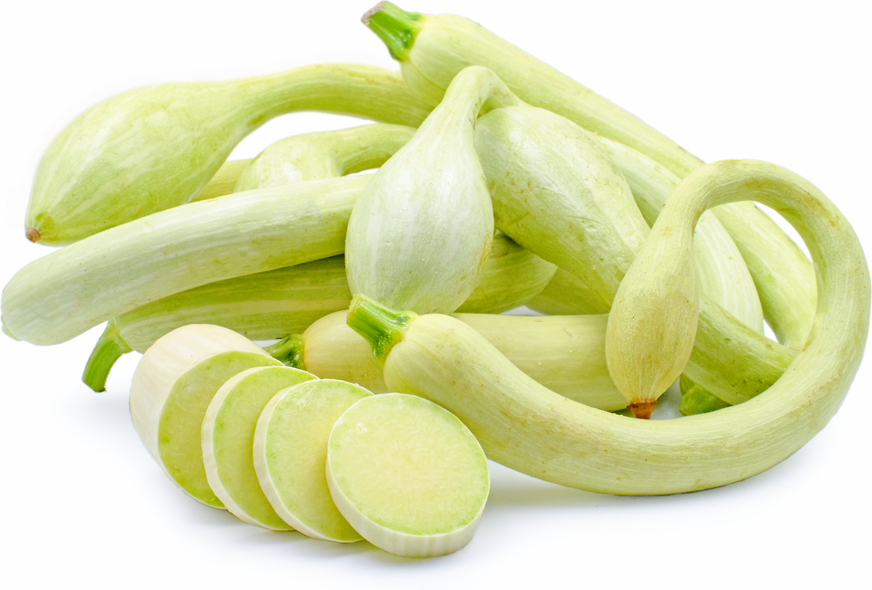


Tromboncino Squash
Estimated Inventory, lb : 0
Description/Taste
Tromboncino squash is small to medium in size, averaging 60-91 centimeters in length, is cylindrical in shape, and can be curved or straight with a slender neck and one bulbous end. When harvested early in the season, the squash’s skin is smooth, thin, and light green with pale, white, vertical stripes. If left on the vine, the skin will transform into a tan coloring with a hardened surface as it reaches maturity. The flesh is firm, dense, and pale green encasing a small seed cavity in the bulbous end containing some pulp and flat, cream-colored seeds. Tromboncino squash is tender, mild, nutty, and sweet with notes of pumpkin, walnut, and artichoke.
Seasons/Availability
Tromboncino squash is available year-round, with peak season in the late summer through fall.
Current Facts
Tromboncino squash, botanically classified as Cucurbita moschata, is an Italian heirloom variety that grows on robust climbing vines that can reach over 4 meters in length and is a member of the Cucurbitaceae family along with pumpkins and gourds. Also known as Zuchetta rampicante, Climbing zucchini, Trombolino d’Albenga, and Serpentine squash, Tromboncino squash is one of the few winter squashes that can also be harvested as summer squash. It can be consumed fresh when young and has a sweet and mild flavor, or it can be left to mature on the vine and consumed when it turns golden, tasting similar to the flavor of butternut squash. Tromboncino squash is widely available and is favored for their unusual shape, versatility, and ability to consumed both raw and cooked.
Nutritional Value
Tromboncino squash is an excellent source of potassium, calcium, iron, zinc, and omega-3 fatty acids. It also contains antioxidants such as vitamins A and C.
Applications
Tromboncino squash is best suited for both raw and cooked applications such as steaming, grilling, sautéing, baking and roasting. The squash can be sliced raw and served in green salads or layered in sandwiches. It can also be used to stuff ravioli or made into gnocchi, bread, fritters, casseroles, cakes, soups, and stews. Tromboncino squash pairs well with citrus, tomatoes, garlic, basil, oregano, meats such as sausage, poultry, or beef, Italian cheeses such as parmesan, risotto, and mozzarella, goat cheese, beets, rice, barley, polenta, pasta, and other summer vegetables like eggplant. As a summer squash, it will keep up to a week when stored whole in the refrigerator. As a winter squash, it can be stored whole for 1-3 months in a cool, dry, and dark place.
Ethnic/Cultural Info
Tromboncino squash is an heirloom vegetable, which means it is an open-pollinated, old-time variety that has been passed down for generations through seed preservation rather than being a created hybrid from varying varieties. Italian households value the Tromboncino squash for its abundant harvest and flavors, and they commonly use the squash to make gnocchi and pasta or sauté it with olive oil and garlic as a stand-alone side dish.
Geography/History
Squash is native to Central and South America, but it was spread across the world via explorers and trade routes. Tromboncino squash is originally from Liguria, a coastal region of northwest Italy that is known for its coastline, rolling hills, and mild climate. Today Tromboncino squash can be found at local markets and specialty grocers in Europe and the United States.
Recipe Ideas
Recipes that include Tromboncino Squash. One




